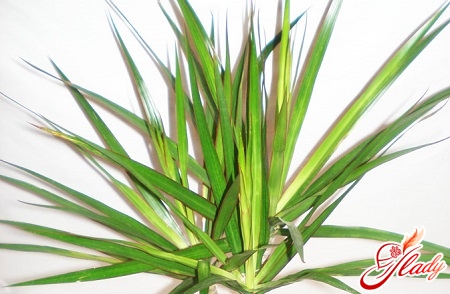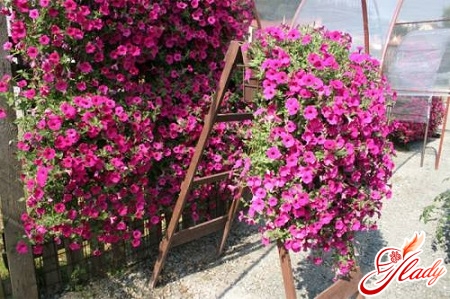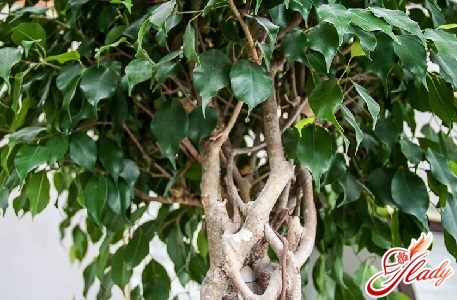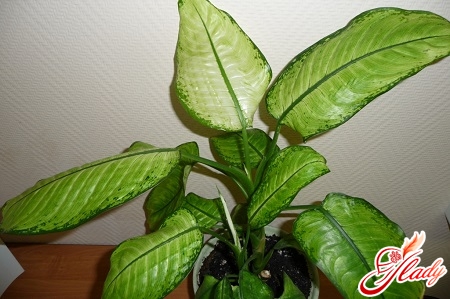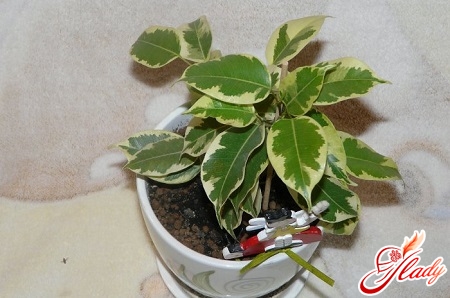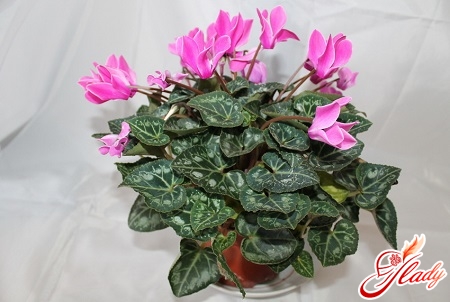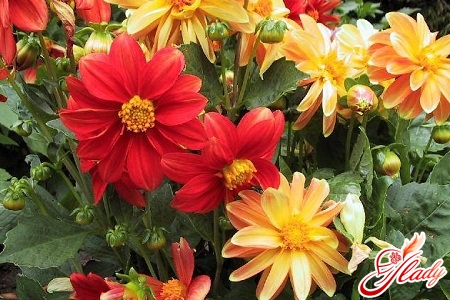 In the month of March, all nature begins to emergewinter hibernation, and gardeners have their first concerns. And the main business of the month is seedlings. At this time, many people ask themselves questions about how to grow flower seedlings, what is better: to grow seedlings yourself or buy ready-made ones? The solution to this question depends on your financial capabilities and love for overcoming difficulties. Growing seedlings yourself, you get the following benefits:
In the month of March, all nature begins to emergewinter hibernation, and gardeners have their first concerns. And the main business of the month is seedlings. At this time, many people ask themselves questions about how to grow flower seedlings, what is better: to grow seedlings yourself or buy ready-made ones? The solution to this question depends on your financial capabilities and love for overcoming difficulties. Growing seedlings yourself, you get the following benefits:
- Save money, because a whole package of seeds is often cheaper than one plant.
- You can grow rare plants that are not in the range of industrial production, as well as tender plants that do not tolerate transplantation or do not tolerate it at all.
- Much less reduce the risk of pest infestation in your future garden.
Growing seedlings
If you decide to grow seedlingson your own, then March is the best time to sow seeds of vegetable crops, annual and perennial flowering plants. Most amateur gardeners do not have specialized greenhouses for growing seedlings, so the only thing left is to huddle on a narrow windowsill in a city apartment. And many seedlings there turn out to be elongated, "dead". How to grow strong, healthy flower seedlings, what should be done with seedlings, how to cope with diseases in order to get healthy, strong seedlings to the envy of all neighbors? The key to future success is the quality of the seeds. Do not save money by buying questionable seeds from hands. You risk getting zero results. Contact a specialized store. When buying seeds, inquire about the expiration date. If the package is sealed hermetically, open it immediately before sowing. So, for sowing we need containers and a substrate. Any low boxes, ceramic or plastic bowls, or regular flower pots can be used as containers. The substrate is peat mixed with sand in equal parts, or special soil for seedlings from the store. The optimal sowing time is late March to early April. Fill the sowing container with moderately moist substrate almost to the brim, level the surface and compact it slightly. Scatter the seeds evenly over the surface, sprinkle with a thin layer of soil, lightly press down and moisten. It is better to do this from a sprayer or a watering can with a very fine sieve to prevent erosion. Small seeds - tobacco, petunia, begonia, poppy, etc. - are mixed with sand (one part seeds to ten parts sand) for uniform sowing and scattered over the surface of the substrate. In this case, they are not sprinkled with soil, but lightly pressed down and moistened.
Heat
For good development and growth of young seedlingsroom temperature of +20°C is enough. During the day it can be 23-25°C, and at night it can drop to 14-16°C. But in the first week after emergence, to prevent the plants from stretching and for better root development, the temperature should be lowered by 2-3°C, because with an increase in temperature the rate of seed germination increases.
Substrate
Half the success in growing seedlings iscorrectly selected substrate. The composition of the substrate may be different for different crops. But there are several conditions that must be observed.
- Strangely enough, but the substrate does not need to betoo nutritious, that is, it should contain a small amount of nutrients. Otherwise, the plants will grow too actively, and with a lack of light they will begin to stretch.
- The substrate must be able to pass water well.
- The substrate must be fresh. This means that you can not sow seeds in a previously used substrate. Before this, such a substrate must be steamed. At home, this procedure can be done in the oven. For steaming, the ground should be poured into the basin, moistened and put on for two hours in the oven. The temperature in the oven should not exceed 85 ° C. If the temperature is higher, then such organic constituents as humus and peat will begin to evaporate from the substrate.
- For plants whose seedlings are highly susceptiblethe disease "black leg", - balsam, annual asters, sweet peas, cabbage, tomatoes, cucumbers - the substrate must consist of turf, peat and sand in a ratio of 3: 1: 1, respectively.
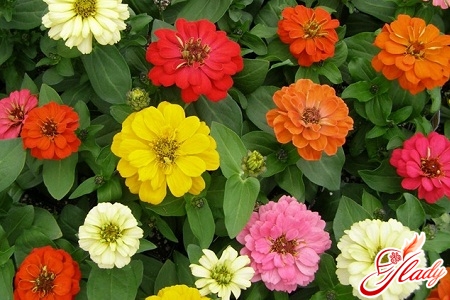
Lighting
For those whose windows in their house face south,southeast or southwest, of course, are lucky. But double glazing still lets in little light, so it is better to backlight young plants. And even more so, you can’t do without backlighting if the windows face north. As backlighting, you can use lamps in which you need to put 40-watt bulbs. But incandescent bulbs give off a lot of heat, which can cause overheating of seedlings. Therefore, it is good to use fluorescent lamps for heating, and one should be a coolish blue tone, and the other - a warm yellowish one. You can also use mercury-arc fluorescent lamps. Good results are given by lighting with metal halide and sodium-discharge lamps. They give light in the orange and red spectral range, which accelerates the development and growth of plants. True, when using such lamps, plants begin to experience a deficiency of blue rays, but this is partially compensated by the light coming from the window. Today, there are special phytolamps. They provide an optimal spectrum of radiation for the development and good growth of plants. At the same time, they do not heat up and serve for a very long time - the lamp life is 10 thousand hours. But such lamps must be protected from moisture when watering, because they do not have moisture protection. The distance from the lamp to the plants should be no more than ten centimeters, which is increased as the seedlings grow. For good development and growth, young plants need to be illuminated for up to twelve hours a day. At the same time, keep in mind that if the windows of your apartment face south, southeast or southwest, then the backlight can be turned on only on cloudy days, and if the windows are northern, then it is turned on daily.
Air humidity
Optimum air humidity for seedlings –60-70%. Because of the central heating, which is still working at full blast in March, the air is very dry. In order to provide the young plants with the right humidity, they need to be sprayed periodically. You can do it differently if you want to ensure constant humidity. Put a polyethylene film under the pots and bend the edges so that you get a kind of open greenhouse. The height of the walls of this greenhouse should be 30 cm higher than the edges of the seedling pots.
Water
Young plants need to be watered regularly.water, not allowing the substrate to dry out. Surface crops are watered between the rows using a pipette or sprayer. All other plants can be watered using a watering can. For watering, use settled warm water. Water at room temperature promotes good root growth. It is best to water in the morning on sunny days.
Seedlings diseases
Brown rot and black leg -the main scourge of seedlings. "Black leg" is one of the most dangerous plant diseases. Its symptoms: cotyledon casts first turn yellow and then wither, and the stem at the soil level turns black, and constrictions appear on it. As soon as these signs appear, the plants first quickly wither and then die. The following crops are most susceptible to "black leg": snapdragon, annual asters, stock, tomato and cabbage. When the first signs appear, the affected plants are removed, and the remaining ones are not watered for several days. In addition, the top layer of soil is carefully removed and clean, preferably river sand, as well as ash or perlite are added.
Root rot
This disease most often affectsCabbage, eggplant, pepper, tomato, annual asters, sweet peas, cloves, sage, primrose. It is not difficult to identify the disease: first, the lower leaves begin to turn yellow, then they turn brown and fall off. Dark stripes appear on the stems. With high air humidity, the affected areas are covered with a white coating, which is the spores of the fungus. The roots of diseased plants become brittle, and the plants most often die. This disease develops when growing plants in acidic soil, as well as if the soil contains an excess of organic matter. To prevent this disease when growing seedlings, always take a loose, fresh substrate, where excess nitrogen is unacceptable. Against "black leg" and root rot, use the fungicide "phytosporin", in which the seeds are soaked before sowing. Taking into account all the above factors, following the recommendations, you will get strong, healthy seedlings at home. We recommend reading:




